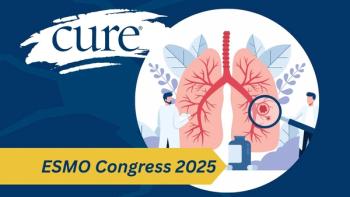
New Prognostic Tool Helps Patients With Leukemia Anticipate Care Needs
First validated prognostic score offers valuable insights for patients with chronic lymphocytic leukemia who are prescribed active surveillance.
A new scoring system can predict how long patients should wait after diagnosis before starting treatment for chronic lymphocytic leukemia (CLL), according to recent study results published in Blood, the journal of the American Society of Hematology (ASH).
Between 70% and 80% of those with CLL are asymptomatic at diagnosis and prescribed a watch-and-wait strategy, also known as active surveillance, until their white blood cell counts and symptoms reach a certain threshold. A prognostic tool could be helpful because the length of time until disease progression varies widely for this group: Roughly one-third will never require treatment; a third will need treatment only after many years without symptoms; and a third will require therapy within the first few months or years. Being able to anticipate how soon treatment might be needed would help patients plan for work and travel disturbances and signal doctors about how frequently to provide monitoring, ASH said in a press release about the findings.
In addition, the ability to predict which cases of CLL will grow aggressively could change the way the highest-risk patients are treated, the researchers stated, if studies prove that intervening with therapy before disease progression can improve their health outcomes.
IPS-E is the first validated prognostic score specifically tailored to forecast the need for treatment in patients with CLL, according to ASH. It represents a new opportunity for patients because most existing prognostic tools for those with this disease are used only after treatment has become necessary and focus on predicting survival, according to the researchers.
"While some patients display a milder disease never requiring therapy, others present active disease shortly after diagnosis and require intervention," lead study author Dr. Davide Rossi, of the Institute of Oncology Research in Bellinzona, Switzerland, stated in the release. "The IPS-E is a simple and a robust prognostic tool based on routine clinical and laboratory variables. The simplicity of IPS-E should facilitate its translation to the clinic."
Creating a New Tool
CLL is a cancer of the white blood cells that causes the body to produce abnormal lymphocytes, a type of immune cell, which then crowd out healthy blood cells and bone marrow.
In the study, researchers gathered existing data about 4,933 patients with asymptomatic, early stage CLL who had participated in 11 international studies. Eligible patients had received their diagnoses after 1996 and were not prescribed treatment beyond active surveillance in the first three months after learning they had the disease.
The researchers started their work by analyzing the cases of 333 of the patients and found that, of 19 factors they considered, three consistently and independently correlated with a shorter time until first treatment: unmutated immunoglobulin heavy chain variable region (IGHV) genes, high absolute lymphocyte counts, and palpable (noticeably swollen) lymph nodes.
The researchers used this information to develop a prognostic score with each factor counting as one point. Patients with zero factors are considered to have a low risk of needing treatment within five years of their diagnosis. Patients with one factor are considered to face an intermediate risk and patients with two or three factors are considered high risk.
The researchers validated the scoring system by using it to stratify the risk of patients who were separated into 10 additional groups. They found that about 30% of patients were categorized as low risk, 35% faced intermediate risk and 35% were at high risk. The scores correlated closely with the patients’ actual outcomes: Of those in the low-risk category, 8.4% required treatment within five years, compared with 28.4% in the intermediate group and 61.2% in the high-risk group.
Moving IPS-E Into the Clinic
The three tests required to establish a patient's prognostic score are widely available, ASH noted in the release. During diagnosis of CLL, lymphocyte counts and lymph node status are routinely assessed. The genetic test to determine IGHV status is usually performed when a patient is preparing to start treatment but could instead be conducted at diagnosis without any need to retest later.
Rossi noted that other factors can be added into the scoring tool if they are later determined in studies to be of key importance.
"The IPS-E can be regarded as a building block to which newly discovered independent outcome predictors for patients with early stage CLL could be added," he said in the release. "A prospective study would help to further assess and eventually strengthen this prognostic tool."





